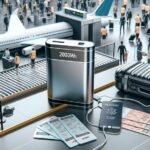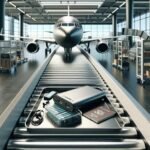Yes, you can bring a 30000mAh power bank on a flight, but you'll need to check its watt-hour (Wh) rating. Most airlines limit carry-on power banks to 100Wh without prior approval. To convert 30000mAh to Wh, multiply by the battery voltage (typically 3.7V for lithium-ion). For a 30000mAh power bank, this would be 111Wh, exceeding the standard limit. Approval from the airline might be necessary. Always pack power banks in your carry-on, follow protective measures against short circuits, and adhere to specific airline rules. Understanding these regulations helps guarantee a smooth journey. There's more on safely managing high-capacity batteries.
Airline Regulations Overview
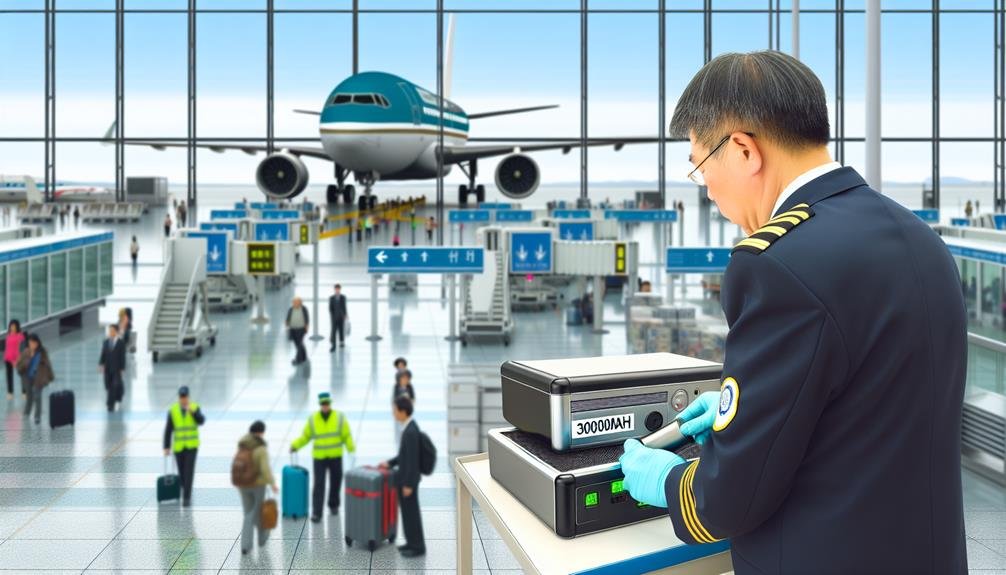
When traveling with electronic devices, it's important to understand the specific airline regulations that govern the transport of high-capacity power banks. Airlines impose restrictions on power banks due to the lithium batteries they contain, which can pose safety risks if not properly managed. As a traveler, you're responsible for making sure that your power bank complies with these regulations to avoid confiscation or delays.
For international travel, power bank limits can vary significantly between airlines and countries. Typically, power banks with a capacity above 100 watt-hours (Wh) require prior approval from the airline. A 30000mAh power bank, depending on its voltage, may exceed this limit, necessitating compliance checks. It's important to verify the watt-hour rating, as it directly influences whether your power bank can be carried on board.
Understanding airline restrictions is important for maintaining safety during flights. Lithium batteries, if damaged or improperly handled, can cause fires. Thus, airlines mandate that power banks be carried in carry-on luggage, not checked baggage. Make sure you check both the airline's and the destination country's regulations well in advance of your trip, as non-compliance can result in penalties or denied boarding. This preparation helps ensure a smooth and safe travel experience.
Understanding Power Bank Capacity
Understanding power bank capacity is vital for guaranteeing compliance with airline regulations and avoiding potential safety risks. When evaluating a power bank, you need to take into account its battery capacity, typically measured in milliampere-hours (mAh). The 30000mAh capacity power banks are significant and capable of charging devices multiple times. However, airlines impose restrictions on the battery capacity of power banks allowed on flights to minimize risks.
Most airlines limit power banks to a capacity of 100 watt-hours (Wh) or less. To determine if your 30000mAh power bank meets this requirement, you must convert mAh to watt-hours. This can be done using the formula: Wh = (mAh × V)/1000, where V is the voltage (usually 3.7V for lithium-ion batteries). For a 30000mAh power bank, this equates to approximately 111Wh, which exceeds most airlines' limitations.
Therefore, if you plan to bring a high-capacity power bank on your flight, it's important to check the specific airline's regulations and verify that your device adheres to the required battery capacity limitations. By understanding these specifications, you can avoid potential issues and ensure a safe and compliant journey.
Safety Concerns and Guidelines
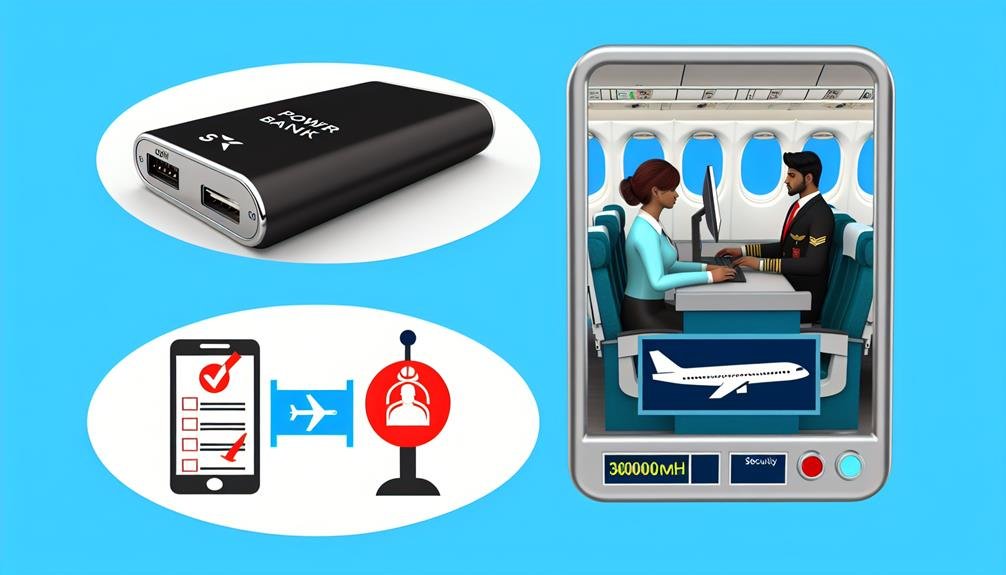
To guarantee safety and compliance, it's essential to follow airline-specific guidelines when traveling with high-capacity power banks. Regulations surrounding battery capacity are critical for maintaining flight safety. Generally, power banks with a capacity exceeding 100 watt-hours (Wh) may require airline approval or could be prohibited altogether. Most 30,000mAh power banks fall into this category, as they typically range around 111Wh, necessitating pre-approval by the airline.
Adhering to power bank restrictions is not only about compliance but also about mitigating potential risks associated with lithium-ion batteries. These batteries can pose hazards such as overheating, fire, or explosion if not handled correctly. As a result, airlines often have stringent regulations, including limitations on the number of high-capacity power banks you can carry and specific guidelines on their placement during the flight.
During security checks, make sure your power bank is easily accessible. Airport security personnel may need to inspect your device to confirm its capacity and compliance with safety standards. Labeling your power bank with its capacity can expedite this process. By following these guidelines, you contribute to a safer flight environment for everyone on board.
How to Pack Your Power Bank
Packing your power bank correctly is vital to guarantee adherence with airline regulations and minimize safety risks. When preparing for your flight, attention to detail is important, especially considering the power bank size and travel restrictions. Here's how you can make sure your power bank is packed securely and in accordance with guidelines:
- Check Airline Regulations: Confirm the specific limitations regarding power bank size and capacity for your airline. Most airlines allow power banks up to 100Wh without prior approval; those between 100Wh and 160Wh may require approval.
- Carry-On Only: Always pack your power bank in your carry-on luggage, never in checked baggage. This minimizes the risk of fire incidents in the cargo hold, where detection and response are delayed.
- Protect Against Short Circuits: Use a protective case or cover for your power bank to prevent accidental activation or short circuits. Make sure the power bank is turned off and any exposed terminals are covered.
- Follow Quantity Limits: Adhere to the quantity limits imposed by airlines, typically allowing no more than two power banks per passenger. This helps manage risk and ensures compliance with safety protocols.
Tips for Traveling With Power Banks
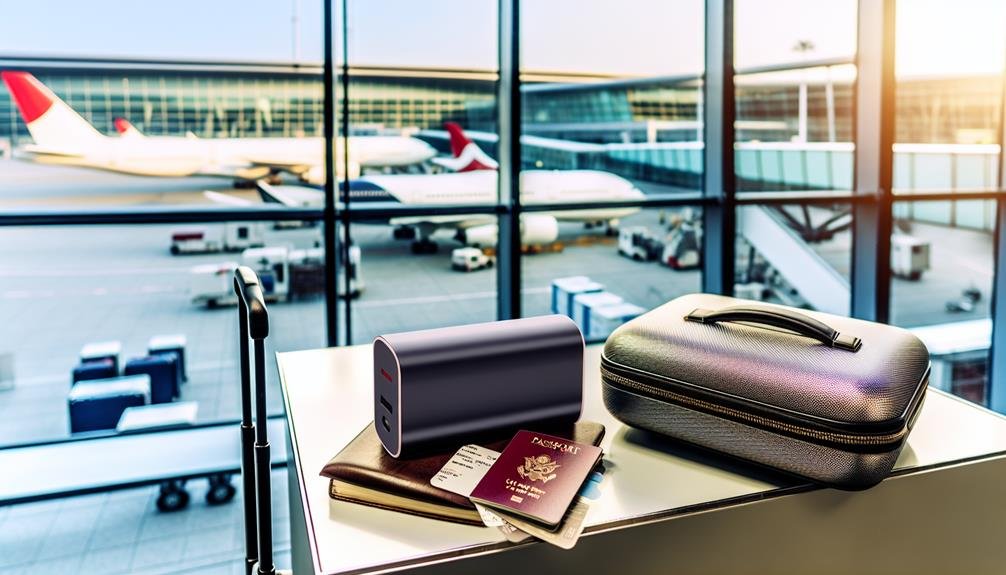
When traveling with power banks, make certain they have a clear capacity label and are stored in compliance with airline safety guidelines. Most airlines stipulate that power banks should be carried in your carry-on baggage, not checked luggage, to mitigate fire risk. Verify the power bank's milliamp-hour (mAh) rating, as many airlines restrict power banks exceeding 100Wh (watt-hours).
To calculate Wh, use the formula: (mAh/1000) x Voltage. For example, a 30000mAh power bank with a voltage of 3.7V yields 111Wh, which may exceed airline limits.
Before your trip, check with your airline for specific regulations. Always pack your power bank in a way that avoids accidental activation. Use protective cases to reduce the risk of short circuits.
Regarding charging devices, make sure your power bank is fully charged before flying, as in-flight charging options can be limited. Optimize battery life by turning off unused apps and settings on your devices.
In case of emergencies, know the procedures for dealing with overheating or malfunctioning batteries. Awareness and preparation are key to maintaining safety while enjoying the convenience of your power bank.
Frequently Asked Questions
Can I Use a 30000MAH Power Bank During the Flight?
Think of your 30000mAh power bank as a powerful companion. Airline regulations often cap battery capacity for safety. You'll need to check travel restrictions on power bank usage to guarantee compliance and minimize risks during your flight.
How Long Does a 30000MAH Power Bank Take to Charge?
To ascertain how long a 30000mAh power bank takes to charge, you'll need to take into account its charging speed and compatibility with your charger. Typically, it can take 6-12 hours, depending on battery life and efficiency.
What Devices Can a 30000MAH Power Bank Charge?
You're wondering what devices a 30000mAh power bank can charge? Its charging capacity covers smartphones, tablets, and laptops. Confirm devices compatibility and check power bank restrictions since airline regulations may limit its use during flights.
Is a 30000MAH Power Bank Safe for All Electronic Devices?
Like a double-edged sword, a 30000mAh power bank presents safety concerns and compatibility issues. Charging speed and battery life vary by device. Ensure technical precision, regulatory compliance, and conduct a risk assessment for maximum safety.
Can I Bring Multiple Power Banks of Smaller Capacities Instead?
Yes, you can bring multiple power banks of smaller capacities. However, you must adhere to capacity limitations and safety regulations set by airlines. Always check specific guidelines to guarantee compliance and minimize any safety risks.


